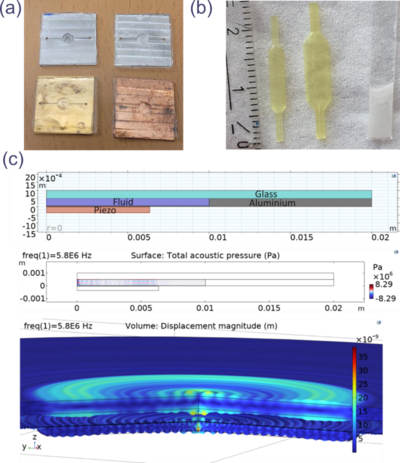Evaluating the content of extracellular vesicles: An acoustic approach using lab-on-a-chip technology
In the recent years, tiny particles excreted by cells (extracellular vesicles) are heavily investigated by research groups around the world. It is believed that these cell excrements are tiny messengers and contain important information that could be used to detect disease faster and cheaper. However, it is very difficult to get hold of them since they are only roughly 200 nano meters big which is 1000 times smaller than the diameter of your hair.
In this project we suggest an approach based on acoustic forces to separate the extracellular vesicles from the rest of the blood cells and increase the concentration to be able to analyse their content which is mostly proteins and ribonucleic acids (RNA). The student will develop novel lab-on-a-chip devices using innovative fabrication procedures including 3D-printing, micro-milling, and glass capillaries. Depending on the interest of the student, numerical investigations for device optimization will be used. Upon a sufficient level of extracellular level up concentration, mass spectrometry could be employed to analyse the content and trace important biomarkers that would ease the detection of disease such as cancer.

Acoustofluidic devices and modelling. Pictures of devices fabricated using micro-milling (a) and 3D-printing (b). Prior to device fabrication, devices are typically simulated using a finite element method (c).
